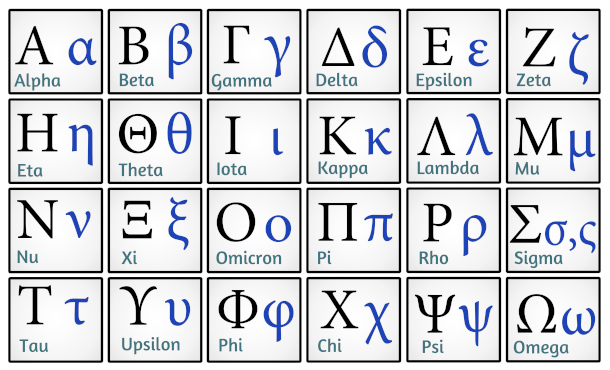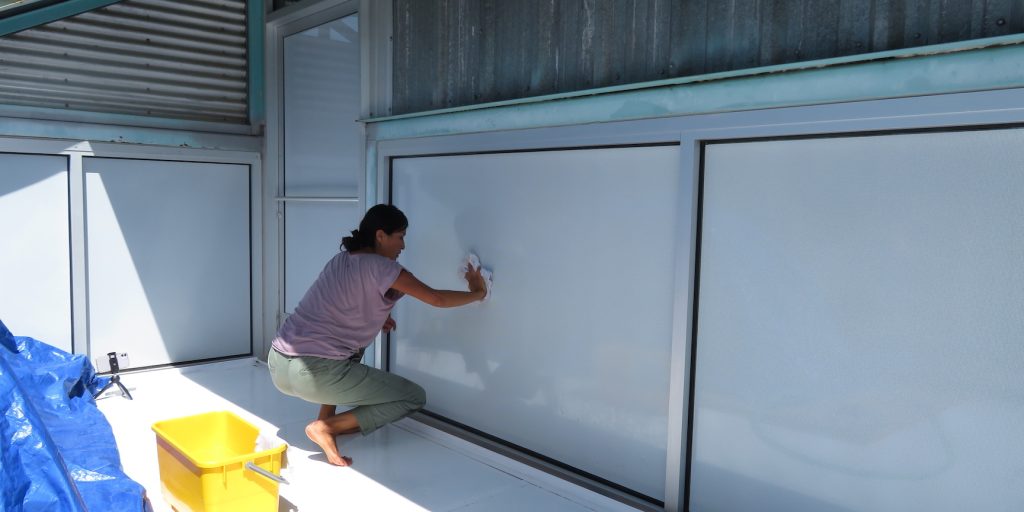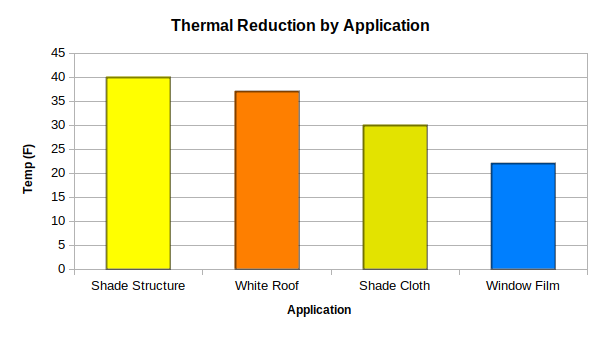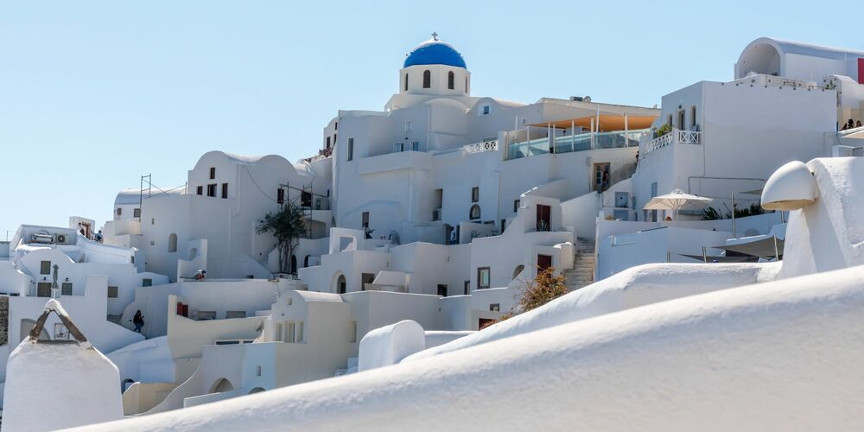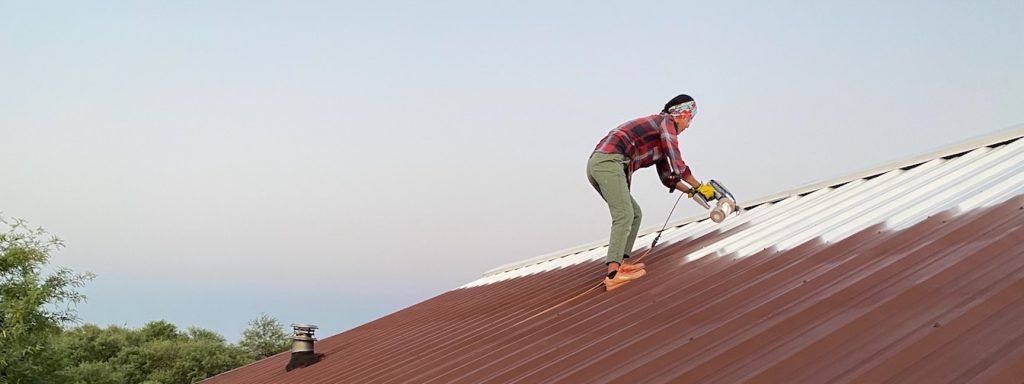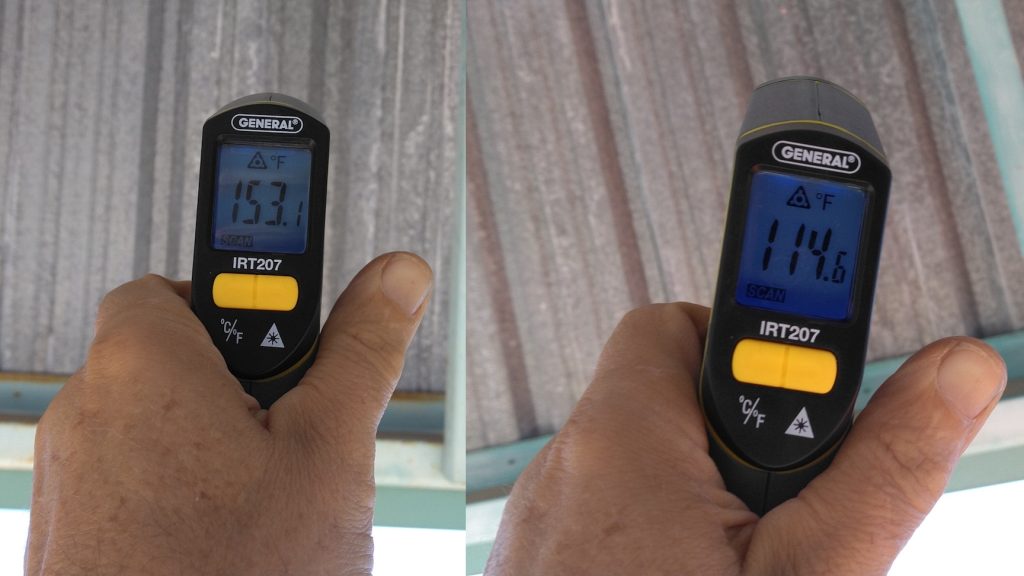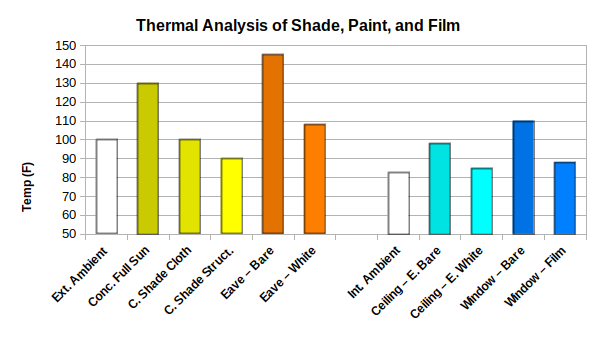Altai National Park, south, Mongolia
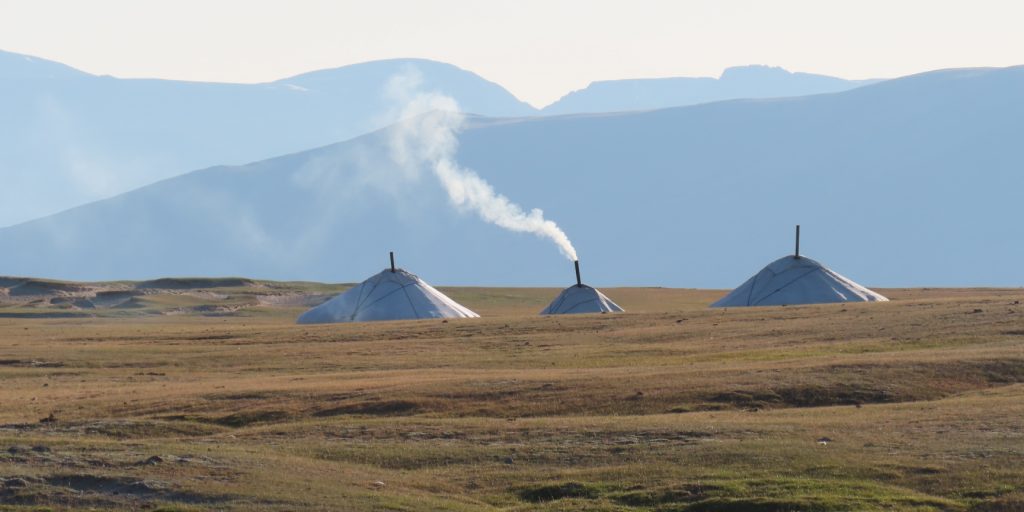
With the close of our second week in Mongolia, mid way through teaching at the Khusvegi English & Nomadic Culture Camp, American teachers Esther and Atina, students Inju and Sunkar, and visitors from Germany Maria and Anna joined teacher, tour guide, and camp co-founder Bakhitgul Altaya (“Bakha”) and Sagsai teacher Naska on a trip to the southern end of the Altai Tavan Bogd National Park. We ventured to the summer home of the nomadic herders, a valley principally occupied by families from Sagsai. We were guests of Bakha’s brother Erkin and his wife Kunai, a second ger (yurt) setup to house us, and to provide a place to cook.
As with any overland adventure in Mongolia, the drive is the most challenging part for those not accustomed to bone jarring 100 kilometer per hour races across high, open volcanic valleys interrupted by the occasional launch of the entire vehicle when a dip or hole is hit. The slower, more technical portions of the drive are certainly worthy of kudos to the Russian-made UAZ-452 4×4 vans (that put even the most formidable Toyota Land Cruiser to shame) and their drivers, but the Mongolian tendency toward competitive racing (sans functional seat belts, if presented at all) when arriving sooner offers no benefit to anyone, results only in bruised, exhausted passengers. As the locals are able to sleep through the entire experience, I recognize that one could argue that I am simply not accustomed to their norm.
We learned that these remote places are within the national park, yet continue to be the summer home to long-standing traditions of nomads who make the four or five days walk in September (return to the lower villages) and February (return to the high, cold mountains before the ice and snow turns to slush and mud). Unwritten social norms dictate which villages and which families claim certain spots to erect their gers (yurts) and graze their animals.
We had the great fortune of spending time time with Bakha’s grandfather, Uabi Akhsakhal, the oldest living Kazakh nomad in Mongolia. At 95 he is yet alert, keen, and wanting to meet everyone who ventures into his domain. He sat with us for more than an hour, Bakha translating (often with tears moistening her eyes and cheeks) as he shared with us several stories of his youth, life as a nomad, and the beautiful way in which his people have lived from the land for centuries.
Uabi was born in China, where some of his relatives yet live. He has been coming to this valley, just below treeline, a few kilometers from the international border, for his entire life. More than a decade ago the Mongolian military abandoned a guard station not far from where we sat, asking him to monitor the border and report any sightings or trouble with those who come through the pass. Bakha told us of times when “people in plastic clothing” (synthetic jackets) would sneak into camp and steal food or animals before retreating back to China.
Uabi shared many more stories each capturing our attention as though we were visited by the ghosts of generations past, sitting with us to share the bread, sweets, and milk-tea. None of us held back tears when Bakha translated his closing remarks, asking that the next generation continue to appreciate and protect the land, that they too come to this place that he has called home for so many years. It is our intent to return next summer to capture Uabi’s stories on film.
This rang true for us as motorcycles are replacing horses, and off-road vans replacing caravans of animals in the migrations. It makes sense. And there is inherently nothing wrong with upgrades and hybrid solutions. But when the human animal becomes complacent, comfortable in temperature controlled homes and vehicles, food derived from single-use plastic packaging instead of from the hand-carved bones of the herd, it becomes less and less likely that each subsequent generation will find reward in that level of labor, seeing these mountains as a retreat, a vacation, and place to visit with family and friends rather that integrate into a nomadic life of direct engagement of the resources that abound.
In our entire time in Mongolia we didn’t see any wildlife beyond a single fox, a few big horn sheep, squirrels, and marmots. No deer, bears, or wolves (which we are told do roam across this part of the country). No signs or tracks. Yet we were never more than a meter from domestic animal footprints and dung, the sweet smell of manure hung in the air day and night (save the few days we were in the capital city of Ulaambaatar). A herd of animals was sometimes counted in the hundreds, just one or two herders keeping them gathered and moving.
We asked about the wild animals, and the answer, while anecdotal, was telling when Bakha said, “We used to see deer and bear, but no, no, we don’t see them anymore. I don’t know where they have gone.” I say (without having conducted research) that perhaps a reduction in the number of animals that feed upon this land (now more than 70,000,000 domestic grazers in Mongolia) could make room for a return of the natural ungulates and their predators. But as with any natural resource controlled by humans, How does one justify a reduction in domestic animals (and associated resources and income) to increase wild game? An new economic ecosystem must be built, perhaps one that shifts toward tourism.
On the second day in the Altai Colleen and I opted to not join the others for a hike above treeline and to the base of a snow field. Instead, we inflated our Alpacka Rafts and ventured down the river that ran adjacent to our host’s home. While we are experienced paddlers, there is always a sense of excitement for venturing down a body of water for which there is no map, no written guidebook, and no one to tell us, in advance, what lies around each bend. We could see the general flow from a high point, a relatively narrow, shallow stream that terminated in an ancient glacial kettle pond that itself fed into Lake Dayan (Даян Нуур), the lower of three lakes fed by a south running river from glaciers in the northwest corner of the Altai National Park.
The run was just one and a half hours, and without incident. We were met by the gaze of a few dozen yaks who stopped grazing when we passed, their heads and eyes following us closely, for surely they had not seen something quite like this before. We could not help but utter a silly yet later repeated anthropomorphism, “What the yak is going on here?!” Just before the kettle pond the water ceased to flow and paddling against the wind was less than fun. We made our way to the grassy shore, packed up and walked back to our home site, just in time to make dinner.
A hi-light of the trip was teaching Bakha’s brother, his wife, and two of the Khusvegi students Inju and Sunkar how to kayak. We found a small riverside pond where we could safely place each into one of our boats where they practiced forward, backward, and spin-left and spin-right. Colleen then helped each into her boat, placed a bit downstream and below the rapids as I paddled out from the pong to meet them for their first-ever movement on the surface of water. Their joy was contagious. What struck us most was the fearless charge into this endeavor by Bakha’s brother and his wife. They took to the water as though they had been doing this for a lifetime.
It reminded me of something Bakha said in the context of the Mongolian horse riding tradition that dates back to even before Chinggis Khan, “The horses, we know them, and they are a part of us. When Mongolians ride, it is like flying—with our horses, we can really fly.”
On the water too, they were flying.

